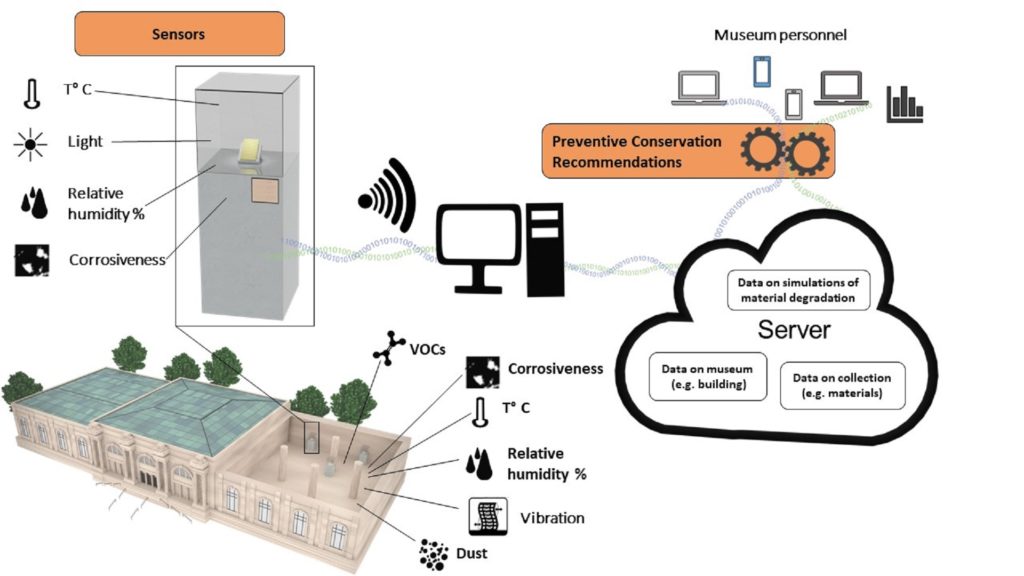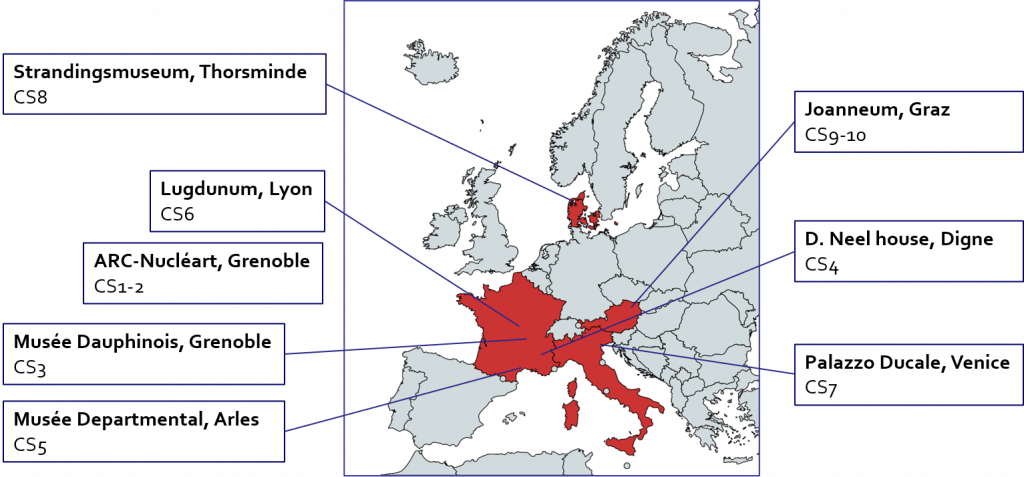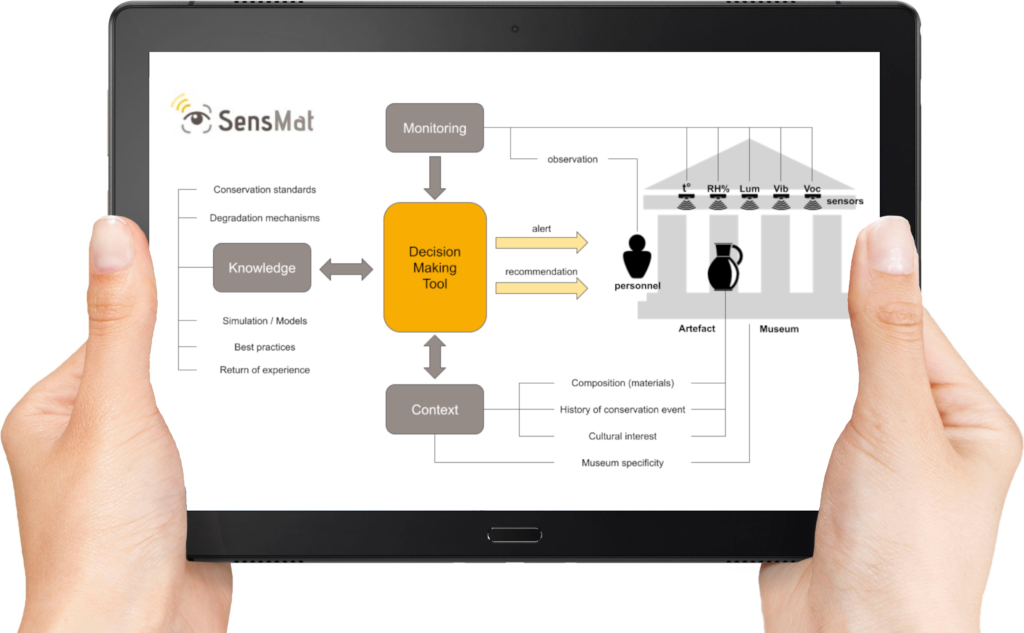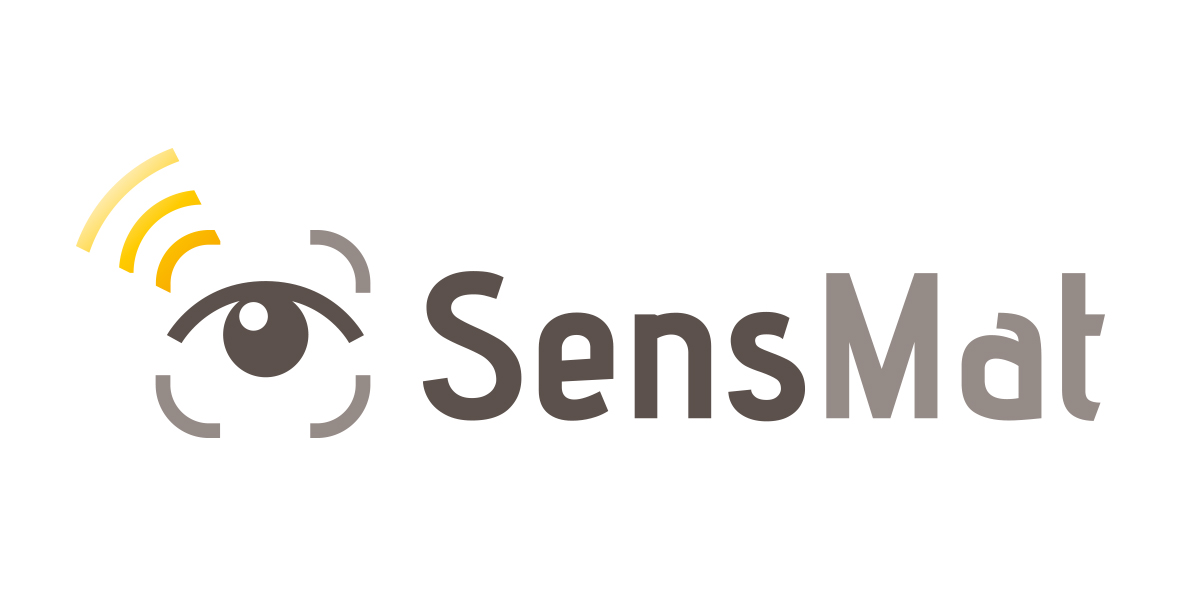Project facts
Presentation
Introduction
Preventive conservation (PC) has emerged as an important approach for the long-term preservation of sensitive cultural heritage (CH), notably for mobile artefacts, those displayed or stored in harsh environments and for small and medium-sized museums. SensMat aims to develop and implement effective, low cost (<20 – 30€ for basic platform), eco-innovative and user-friendly sensors, models and decision-making tools, as well as recommendations and guidelines to enable prediction and prevention of degradation of artefacts as a function of environmental conditions.
The concept
Sensmat project is a « User driven project » : the goal is to dimension latest developments according to the needs and constraints of each museum actor (sensitive materials, artefacts, legal, societal, environmental constraints…).
SensMat solution combines latest developments on:
- Sensors: T°C, RH%, VOCs, Corrosiveness, Particulate matter, Light, Vibration,
- BIM (Building Information Modelling) and materials modelling (Ex: BIM tools for example will help to master all environmental conditions. BIM permits to improve the interface with the end-user via a 3D graphic tool and will facilitate the implementation of the necessary technologies and methods),
- IoT: Internet of Things,
- Data management tools: a decision making engine based on contextual data and a knowledge data will be customized for each small and medium museum.

The SensMat System
To demonstrate concepts of SensMat project in real small and medium museums building contexts, 10 Case Studies, have been selected in terms of climate conditions, typology and status of artefacts, the encountered materials and their sensitivity.
We will demonstrate the efficiency and the relevance of tools developed.
Those case studies are “good candidates” for setting up an overall environmental monitoring to optimize the current conditions of display/storing and to fulfill with the best preservation requirements.

A user-friendly all in one-solution that could reduce or eliminate the need for overly expensive restoration through PC. Improvement of key parameters: efficiency to monitor environment and/or to predict material degradation, cost of tools, size of sensors systems, accessibility of the technology for not specialized people (training), user friendliness, monitoring systems can be adapted easily to different configurations, standardization of computer codes to improve interoperability…

Impacts & Results
SensMat specific objectives and expected results
- Review of preventive conservation and survey, for case studies choice recommendations;
- Development and tailoring of sensitive materials degradation models and BIM as support to master environmental conditions;
- Development of low-cost sensors and sensing system and ultra low-cost radio powered sensors;
- Corrosiveness sensors;
- Miniaturised and real-time wireless sensor node;
- Integrated software framework;
- Optimisation of communication systems (gateway and IoT) for the wireless multi-sensors platform;
- Data management tools: a decision making engine based on contextual data and a knowledge data base will be customized for each small and medium museum;
- Integration of the different components developed through the specific objectives into the SensMat systems and demonstrating it as a service in 10 case studies.
Impacts
Significant impact on practical aspects of the preventive conservation through the identification, analysis and selection of the recommended approaches taking into account usage (combining building environment, easiness of operation…) with the aim to offer the best services.
Significant impact on prototypes design (from sensors up to DMT), manufacturing and beta tests, anticipating tools integration challenges.
The solution as defined today will help future users to envisage more how their involvement would occur.
The impact goes beyond the simple technical aspects because the introduction of the solution will initiate a progressive modification of thinking about common practices. PC actors will envisage the ability to get valuable information without affecting artefacts materials and compromising too much the preventive conservation budget (maintenance).
The solution as defined will help future users to appreciate, for example, easiness and flexibility potentially provided by the solution, they might also reconsider some of their common practices, due to the benefit of the rapidity for corrective actions (ex: climate management system failure / materials degradation).
The information obtained practically in real time will create a new form of relationship between small and medium museums staff at several levels technical and administrative. This will enhance and facilitate exchanges of technical expertise and help them to plan trainings (provision of services by experts with strong experience) and define more accurately the perimeter of responsibilities.
SensMat first results with demonstrator’s descriptions might highlight some potential interactions with other museums facilitating the comparison of their respective plan for corrective actions and running costs of museums and consequently generate the adhesion of some new SensMat users’ groups.

